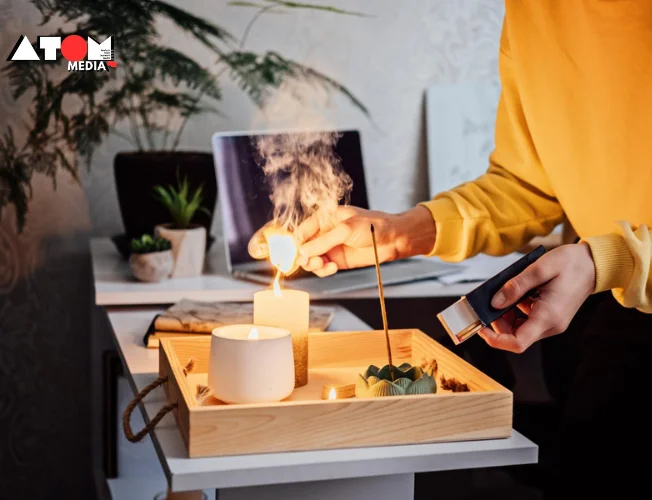As the festive season fills homes with the aroma of gingerbread and pine, scented candles, incense sticks, and home fragrances become a go-to for creating a cozy atmosphere. However, a recent study led by Asit Kumar Mishra from the University College Cork and Marie Coggins of the University of Galway reveals a darker side to these mood-enhancing products. While they may mask unpleasant odors, they contribute significantly to indoor air pollution, posing health risks for both short-term and long-term exposure.
The Impact of Scented Candles on Indoor Air Pollution
According to the study, burning scented candles, incense sticks, or using air fresheners in under-ventilated rooms exacerbates indoor air pollution. The situation worsens when these practices are combined with other factors like smoking or blocked wall vents. Poor ventilation traps harmful chemicals and particulate matter, increasing exposure for everyone inside the room.
The World Health Organization’s Findings
The World Health Organization (WHO) highlights the alarming impact of scented candles on indoor air quality. Burning them in a closed room can raise fine particle concentrations to levels 15 times higher than recommended limits. In such settings, it can take several hours for air quality to return to safe levels, especially in poorly ventilated spaces.
Harmful Chemicals Released by Home Fragrances
Burning scented candles or incense sticks produces a complex mix of pollutants, including:
- Toxic Gases: Carbon monoxide, sulfur dioxide, and nitrogen oxides.
- Volatile Organic Compounds (VOCs): Harmful chemicals commonly found in home fragrance products.
These pollutants can have severe effects on health, ranging from short-term irritation to long-term diseases:
- Short-Term Effects: Coughing, sneezing, and irritation of the eyes, nose, throat, and lungs.
- Long-Term Risks: Chronic conditions like asthma, heart disease, lung cancer, and bronchitis.
Why Even Organic Candles Aren’t Safe
While many believe that candles made from organic or natural materials are safer, the study debunks this myth. Even natural products release harmful VOCs and particulate matter when burned, contributing to indoor air pollution.
The Broader Implications of Indoor Air Pollution
The findings from this study emphasize that the seemingly harmless act of lighting a scented candle or using air fresheners has far-reaching implications for indoor air quality. Indoor air pollution is often overlooked compared to outdoor pollution, but its impact on health can be equally detrimental.
Steps to Reduce Indoor Air Pollution
- Enhance Ventilation: Ensure proper airflow by unblocking vents and keeping windows open when possible.
- Limit Use of Scented Products: Avoid burning candles or incense sticks in enclosed spaces.
- Opt for Safer Alternatives: Use non-burning options like essential oil diffusers or air purifiers to create a pleasant ambiance without compromising air quality.
Final Thoughts
As we embrace the festive spirit, it’s essential to prioritize health and safety in our homes. While scented candles and home fragrances may add charm to celebrations, their impact on indoor air quality cannot be ignored. Awareness and simple adjustments can go a long way in reducing health risks and ensuring a safer living environment for everyone.
Read more: Marketing News, Advertising News, PR and Finance News, Digital News





